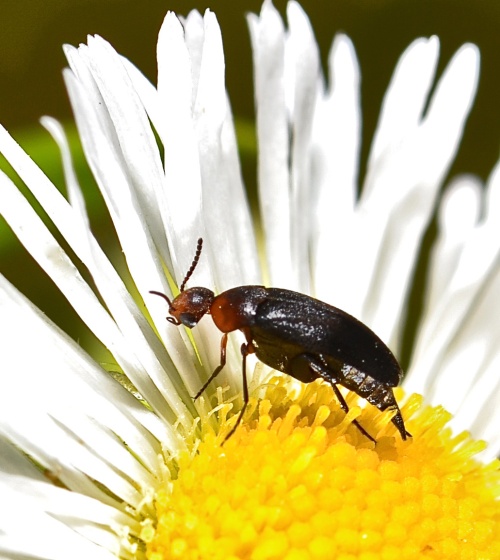
Tumbling flower beetle found in the prairie area at Parkland College, Champaign, IL. Click/double click image to enlarge.
One of my major photography challenges has been capturing a reasonably good image of a tumbling flower beetle. This laterally compressed, wedge-shaped family of beetles seem to always move on their sides, rarely standing upright.
Adults can be found throughout the summer, feeding on pollen and other plant products they encounter. They quickly tumble off flowers when disturbed. Larvae feed on plant stems, fungi, and decaying wood.
My field guides aren’t helping me identify species of this individual. I’ll have to delve more deeply when I’m back in my lab.











